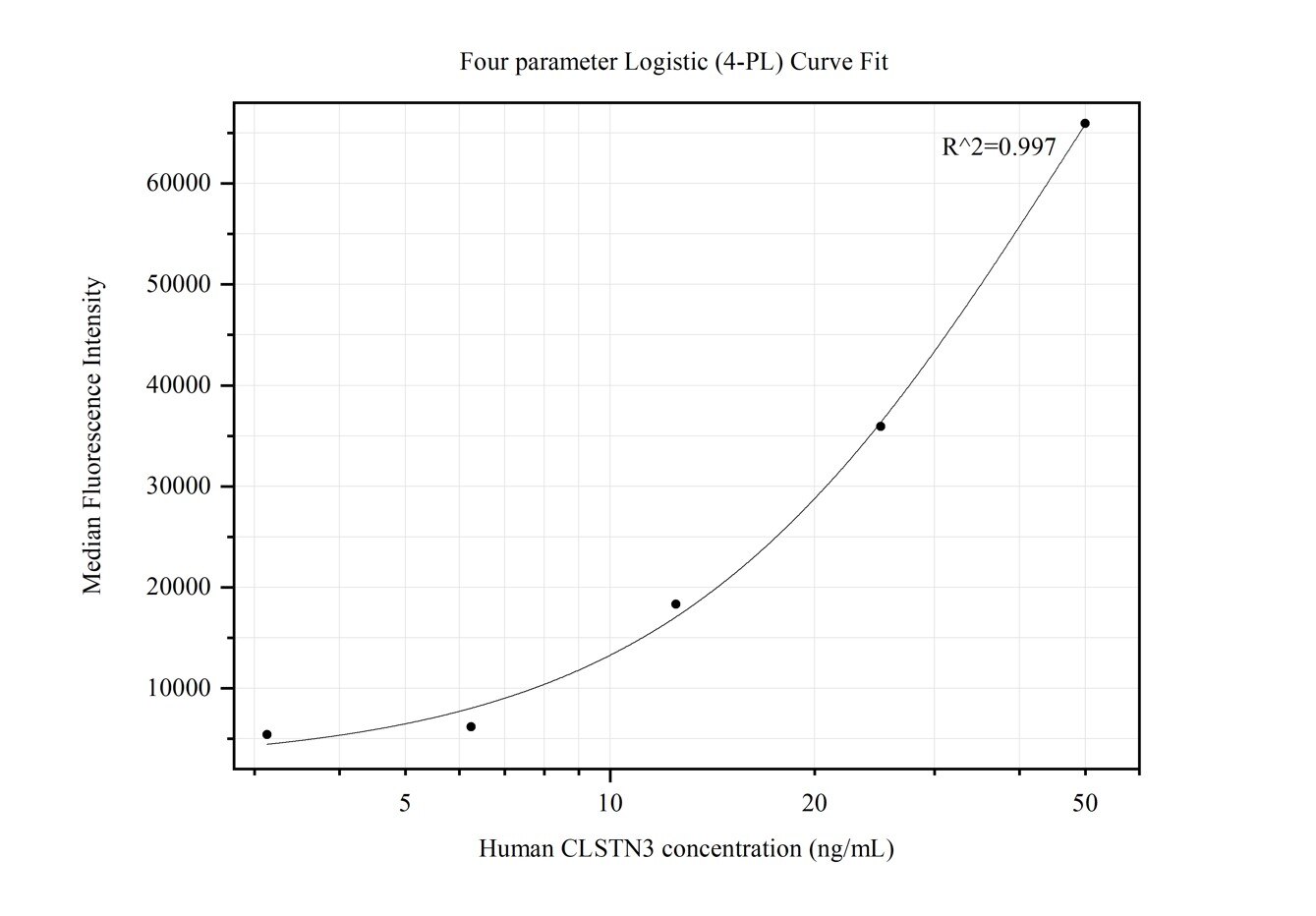Validation Data Gallery
Tested Applications
Recommended dilution
| Application | Dilution |
|---|---|
| It is recommended that this reagent should be titrated in each testing system to obtain optimal results. | |
Product Information
68855-3-PBS targets CLSTN3 as part of a matched antibody pair:
MP50250-2: 68855-3-PBS capture and 68855-2-PBS detection (validated in Cytometric bead array)
Unconjugated mouse monoclonal antibody pair in PBS only (BSA and azide free) storage buffer at a concentration of 1 mg/mL, ready for conjugation.
This conjugation ready format makes antibodies ideal for use in many applications including: ELISAs, multiplex assays requiring matched pairs, mass cytometry, and multiplex imaging applications.Antibody use should be optimized by the end user for each application and assay.
| Tested Reactivity | human |
| Host / Isotype | Mouse / IgG1 |
| Class | Monoclonal |
| Type | Antibody |
| Immunogen | CLSTN3 fusion protein Ag14897 相同性解析による交差性が予測される生物種 |
| Full Name | calsyntenin 3 |
| Calculated molecular weight | 968 aa, 107 kDa |
| GenBank accession number | BC039075 |
| Gene Symbol | CLSTN3 |
| Gene ID (NCBI) | 9746 |
| Conjugate | Unconjugated |
| Form | Liquid |
| Purification Method | Protein G Magarose purification |
| UNIPROT ID | Q9BQT9 |
| Storage Buffer | PBS only , pH 7.3 |
| Storage Conditions | Store at -80°C. |
Background Information
Calsyntenins, also called alcadeins, are cadherin superfamily proteins first identified as synaptic proteins (PMID: 11161476; 12498782). Calsyntenins are type I transmembrane proteins with extracellular domains containing two cadherin repeats and an LNS (laminin, neurexin, sex hormone-binding globulin) domain (PMID: 24613359). Calsyntenin-3 (CLSTN3, also known as alcadein-beta) is a synapse-organizing protein that promotes the development of synapses. It is a postsynaptic adhesion molecule that binds to presynaptic neurexins to mediate both excitatory and inhibitory synapse formation (PMID: 25352602; 24613359).
